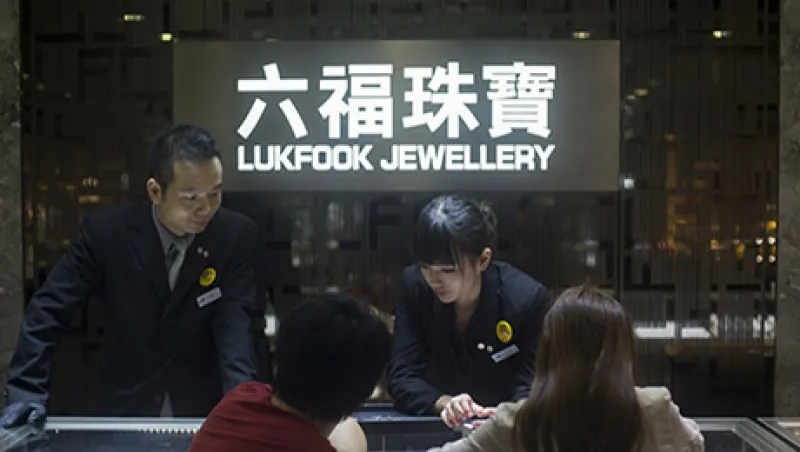The Chinese economy is still in significant transition, including adjusting to a diminishing role as the low-cost manufacturer to the world. China’s government has thus been aggressively repositioning the economy toward higher-value-added manufacturing and service-based initiatives and tackling corruption and graft issues. Over time China’s robust reform initiatives may allow it to ultimately reposition itself for more sustainable growth and wealth creation for investors.
Many of the headwinds facing China are structural in nature, however, and we expect a slower economic trajectory, or a “new normal,” as nominal lending growth is brought back below nominal gross domestic product. Moreover, given that China and other Asian emerging markets are expected to account for nearly two thirds of incremental global GDP growth, this transition is occurring when much of the world is looking east for growth to help fix imbalances, strengthen reserves and pay down debt.
There is no longer any debate: China is having a hard landing in the fixed-investment arena. Electricity usage year-over-year is now running at zero growth versus a peak of 18.6 percent in February 2014. Resource sales at a publicly traded construction and mining equipment manufacturer fell 59 percent in 2013 and an additional 28 percent in 2014. All told, sales in this segment for Asia are now below 2010 levels. Significantly, we have seen no evidence that this part of the Chinese economy is recovering, and, given our thesis about nominal lending growth rates needing to fall below nominal GDP, we expect this trend to continue. Were it not for the GDP-per-capita story — and its implication for consumption growth — and the government’s huge reserve base, the Chinese economy would be in an outright free fall.
Along the lines of what we at KKR said in our piece “ 5 Key Reasons for the Asynchronous Global Recovery ,” we have strengthened our view that global trade has stalled. Notably, a slowdown in global trade is not limited to China. In Indonesia the government’s directive to restrict raw unprocessed commodities exports as well as its push for more higher-value-added activities (as opposed to shipping lower-value-added unprocessed commodities to smelters in China) reminded us of recent behavior patterns in Brazil with energy investment. As is evident from recent quarterly numbers, the South American country’s decision to meddle with its domestic energy activity has hurt trade, dented GDP growth and raised the country’s cost of capital. Although we think Indonesia’s protectionist techniques are less extreme, they are an important reminder that whereas global trade as a percentage of GDP increased consistently from 17 percent in 1986 to 32 percent in 2008, it is certainly no longer business as usual when it comes to cross-border trade and flows.
Earnings yields relative to risk-free rates and peer countries suggest an arbitrage exit. Spending time in Asia confirms massive valuation discrepancies. Consider the following: Many publicly listed Chinese companies are trading at less than ten times earnings, whereas public comps in India and Indonesia that use those business models now might fetch 15 to 20 times earnings. This relative valuation conundrum is further exacerbated by the fact that the risk-free rate in India and Indonesia is materially higher than in China. If we are right, the simple math suggests more private equity in China and more debt structures in India and Indonesia (that is, unless one believes that corporate growth rates are materially understated in India and Indonesia or are materially overstated in China).
Leadership can make a difference. We at KKR continue to champion an emerging-markets theme of “so bad leads to so good.” If we use Mexico and India as examples, we note that after years of economic underperformance, both now have new leadership in politics and central banking. Not surprisingly, given the magnitude of the aforementioned leadership changes, risk premiums in these countries have collapsed, driving the price of risk assets substantially higher in recent quarters. With a new leader (Joko Widodo in 2014) and central banker (Agus Martowardojo in 2013), Indonesia now has the potential to join this elite club of emerging markets. A key data point will be whether Widodo pushes through a 40 to 50 percent fuel subsidy hike in this month. We are optimistic that Indonesia’s new president will implement this change. With it, he will pave the way to a significant increase in foreign direct investment. We believe external capital is now needed, as Indonesia has one of the lowest deposit-to-GDP ratios of countries in which KKR is open for business.
Bottom line: The Asia story is changing in several important ways. First, China’s continued slowdown means that we need to avoid putting equity into sectors and companies that are linked to the fixed-investment binge that defined the China growth miracle over the past 20 years. We do not think that China is going to implode outright. But we do see little upward multiple expansion in the market without a massive restructuring of the banking system. Maybe the situation is different this time, but history suggests that there are few examples of bear markets turning positive on a sustained basis until investors feel comfortable that the financial plumbing, or banking system, is adequately capitalized. Second, we are likely to see some massive restructuring opportunities in the mining, natural resources and related construction and infrastructure businesses. As China’s “new normal” sinks in, we believe promoters from India to Australia to Indonesia should reevaluate their growth rates and capital structures. Third, internal demand is likely to be revalued upward in the coming years. If they can put forth intelligent macroeconomic policies, we think Mexico, India and Indonesia could see the private equity multiples on their publicly traded equities drift higher in the coming years. Amid sluggish global growth, consistent internal demand stories with little need for rebalancing are going to see their cost of capital fall further, in our view.
Henry McVey is the head of global macro and asset allocation at KKR in New York.
See KKR’s page for more on China’s economic development.
Get more on emerging markets and on macro.






